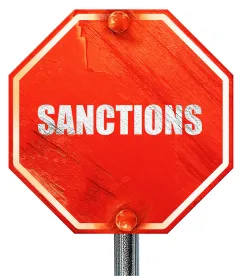In March 2017, World Bank Group president Jim Yong Kim announced that the World Bank would provide a record $57 billion in financing for projects in sub-Saharan Africa in the 2018–2020 fiscal year period. Consistent with that commitment, the World Bank’s most recent annual report indicates that $19.8 billion was issued to partner countries and businesses in sub-Saharan Africa in the 2018 fiscal year. Moreover, the African Development Bank (“AfDB”) reached its highest ever disbursement level in 2017 at approximately $7.4 billion, and it has set an overall lending target for 2018 of approximately $9.5 billion. This means that there are and will continue to be substantial opportunities for companies to bid for and participate in World Bank and AfDB-financed projects in Africa. It is important for companies embarking on such projects to understand the risks associated with the sanctions and debarment procedures that the World Bank, AfDB, and other multilateral development banks (collectively, the “MDBs”) have put in place to ensure that development financing is used for its intended purposes and is not misspent through fraud, corruption, or other forms of misconduct.
The World Bank has aggressively enforced its sanctions and debarment procedures for several years, and the other MDBs, including AfDB, have in recent years followed suit. According to a report published by the World Bank’s Office of Suspension and Debarment (the “OSD Report”), the World Bank imposed sanctions on 489 firms and individuals from 2007 through 2017, excluding sanctions imposed on sanctioned firms’ corporate affiliates and cross-debarments imposed under the 2010 Agreement for Mutual Enforcement of Debarment Decisions between the World Bank, AfDB, the Asian Development Bank (“ADB”), the European Bank for Reconstruction and Development, and the Inter-American Development Bank (“IADB”). The increasing enforcement activity of the other MDBs is reflected in the number of cross-debarments that have recently been imposed by the World Bank. For example, the 2018 annual report published by the World Bank’s Integrity Vice Presidency (“INT”) indicates that the World Bank cross-debarred 73 entities and individuals in the 2018 fiscal year alone, in recognition of debarments imposed by AfDB, ADB, and IADB.
We described the World Bank’s sanctions and debarment process (which is similar to the other MDBs’ processes) in a prior alert. In this post, we discuss the kinds of misconduct that can lead to sanctions proceedings, the potential consequences of a sanctions proceeding, and steps companies can take to guard against the risk of a sanctions proceeding.
What conduct leads to sanctions proceedings?
The World Bank and AfDB sanctions procedures define “sanctionable practices” to include fraudulent, corrupt, collusive, or coercive practices in connection with the awarding or execution of a Bank-financed contract, or the obstruction of a Bank audit or investigation. Most sanctions cases are based on fraudulent practices, followed by corrupt and collusive practices. According to the OSD Report, 81% of World Bank sanctions cases between 2007 and 2017 involved allegations of fraudulent practices, 20% involved allegations of corruption, and 10% involved allegations of collusion (the figures exceed 100% as some cases involved allegations in more than one category).
A fraudulent practice is defined as “any act or omission, including a misrepresentation, that knowingly or recklessly misleads, or attempts to mislead, a party to obtain a financial or other benefit or to avoid an obligation.” Past fraudulent practices matters have involved: the misrepresentation of facts in tender submissions (such as the qualifications, experience, educational background, or availability of key personnel); forgery or falsification of documents (such as audited financial statements, bank guarantees, powers of attorney, business licenses, references, expense claims and supporting documents, and purported agreements with sub-contractors or joint venture partners); over-billing, including by submitting inaccurate time sheets or misrepresenting work progress; failure to disclose agreements with or payments to agents, sub-contractors, or joint venture partners; and failure to disclose conflicts of interest.
A corrupt practice is defined as “the offering, giving, receiving or soliciting, directly or indirectly, of anything of value to improperly influence the actions of another party.” Past corrupt practice cases have involved active corruption (including the payment of bribes, directly or through third parties, to influence tender processes, secure contracts, influence the implementation of projects, or facilitate the processing of invoices) and passive corruption (such as accepting bribes to direct contracts to particular contractors, or to approve inaccurate progress reports or fraudulent invoices). Several cases have involved the provision of non-monetary things of value, such as purported study tours that were primarily recreational in nature, vehicles provided to project officials for personal use, and extra-contractual services.
A collusive practice is defined as “an arrangement between two or more parties designed to achieve an improper purpose, including to influence improperly the actions of another party.” Past collusive practices cases have involved parties simulating competition by bidding with knowledge of each other’s prices or agreeing in advance to win different tenders and share the profits; making arrangements with procurement staff to obtain confidential tender information, modify bid specifications, or artificially inflate prices; and directing contracts to parties in exchange for kickbacks.
Obstructive practices are broadly defined to capture any conduct that may impede an investigation or hinder the Bank’s contractual audit rights. Past cases have involved outright refusals to cooperate with audits or investigations; providing inaccurate or incomplete documentation in response to requests for information; fabricating documents; and deleting email correspondence relevant to an investigation.
Coercive practices include harming a person or property, or making threats, to improperly influence the actions of a party. Coercive practice cases are rare, but in 2014 the World Bank debarred an individual for fraudulent and coercive practices on the basis that he submitted a fraudulent expense claim and made threats in an effort to have the fraudulent expenses paid.
What are the potential consequences of a sanctions proceeding?
The same range of sanctions appears in the respective sanctions procedures of the World Bank and AfDB. The sanctions, which are generally publicized, may be imposed in connection with a negotiated settlement or a contested proceeding.
The most commonly-imposed sanction is debarment, which means that the sanctioned company or individual is declared ineligible to participate in or otherwise benefit from any Bank-financed project. A debarment may be permanent or for a specified period of time, which in practice ranges from less than one year to many years—for example, the World Bank’s Sanctions Board recently imposed a 22.5-year debarment in a case involving allegations of corrupt, collusive, and obstructive practices. A debarment of longer than one year will generally qualify for cross-debarment by the other MDBs.
Debarment is often combined with “conditional release,” which means that the sanctioned party must demonstrate that it has satisfied certain conditions to have the debarment lifted. A party may also be “conditionally non-debarred,” which means that the party will remain eligible for participation in Bank-financed projects but must comply with specified conditions, failing which the non-debarment will be converted into a debarment. The conditions that are imposed typically include the implementation of a satisfactory compliance program and may include additional conditions such as cooperation with Bank investigations or the appointment of a compliance monitor.
The MDBs may also require sanctioned parties to pay restitution or other financial remedies. For example, in 2014, AfDB required four companies implicated in the Bonny Island corruption matter in Nigeria to pay a total of $22.7 million, to be used in AfDB projects preventing and combating corruption in countries across Africa. In 2017, a company that settled a corrupt practices case with the World Bank agreed to pay a financial remedy of €6.8 million to the DRC.
Finally, the MDBs frequently make referrals to national law enforcement authorities, which may initiate their own investigations and bring administrative or criminal enforcement actions. The introduction to INT’s 2017 annual report noted that the World Bank has “formalized information sharing and joint activities with . . . counterparts through 55 cooperation agreements” and “helped national authorities and other anti-corruption bodies stay apprised of relevant fraud and corruption risks by making 456 referrals in 101 countries.” INT’s 2018 annual report indicates that a further 43 referrals were made in the 2018 fiscal year. There have been a number of instances in which parallel enforcement actions were brought by an MDB and a national law enforcement authority—for example, in 2015, Hitachi Ltd. entered into settlements with AfDB and the U.S. Securities and Exchange Commission (“SEC”) based on allegations that its subsidiary channelled payments to the African National Congress to secure power contracts in South Africa. In a press release announcing the settlement, the SEC noted that it appreciated the assistance it had received from AfDB’s Integrity and Anti-Corruption Department and hoped the cooperation would represent “the first in a series of collaborations.”
How can a compliance program help?
Companies involved in MDB-financed projects should implement policies, procedures, and controls to guard against the occurrence of sanctionable practices. Even if such controls fail to prevent misconduct, they can put the company in a better position to defend itself in a sanctions proceeding. For example, when determining whether a misrepresentation was reckless for purposes of assessing whether a company has committed a fraudulent practice, the World Bank’s Sanctions Board has indicated that it will consider whether the company took precautions that were commensurate with the risk at issue. Similarly, in assessing whether a company should be held responsible for the actions of a “rogue employee,” the Sanctions Board generally considers whether the company had controls and supervision in place sufficient to prevent or detect the misconduct in question. If a company is sanctioned, being able to demonstrate that a robust compliance program is in place may help the company secure a shorter period of debarment or avoid the imposition of a compliance monitor.
The compliance measures that are put in place should be guided by a thoughtful risk assessment, the Integrity Compliance Guidelines published by the MDBs, and the patterns of conduct on which past sanctions cases have been based. In addition, insights regarding the control failures underlying past enforcement matters can be gleaned from past World Bank Sanctions Board decisions, which have been published in full since 2012. For example, past decisions have highlighted the importance of taking steps to ensure that no inaccurate or misleading information is included in tender submissions (including by implementing four-eye verification procedures and processes to authenticate key documents, structuring performance incentives in a way that promotes ethical practices, and providing sufficient guidance to personnel involved in preparing submissions); ensuring that robust financial controls are in place and regularly tested through audits; and ensuring that the use of agents is subject to appropriate due diligence and monitoring. Many of these principles will be familiar to anti-corruption compliance professionals, as they are consistent with the compliance best practices articulated by enforcement authorities including the U.S. Department of Justice (“DOJ”), which we discussed most recently in an alert describing 2017 guidance released by the DOJ’s Fraud Section regarding the criteria it has generally found relevant in evaluating corporate compliance programs.
This article is intended to provide general information. It does not constitute legal advice.






 />i
/>i

